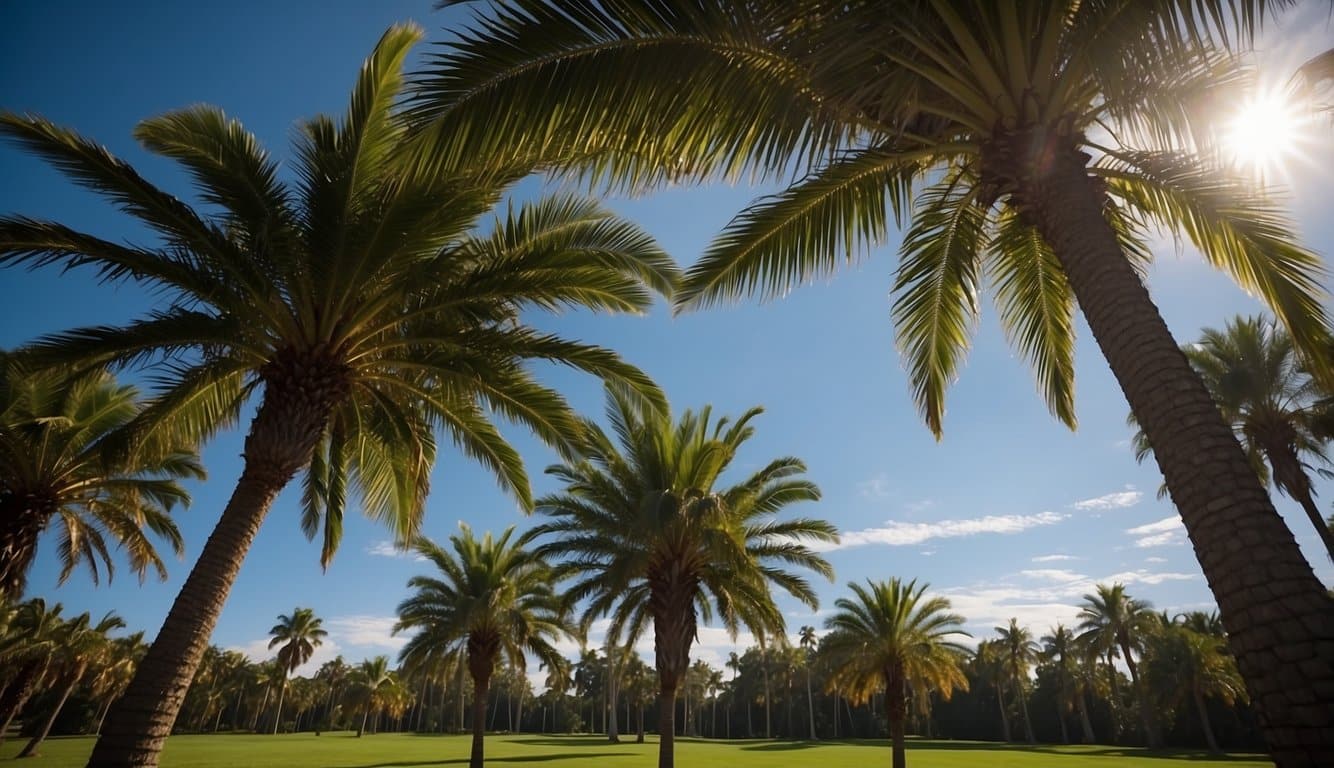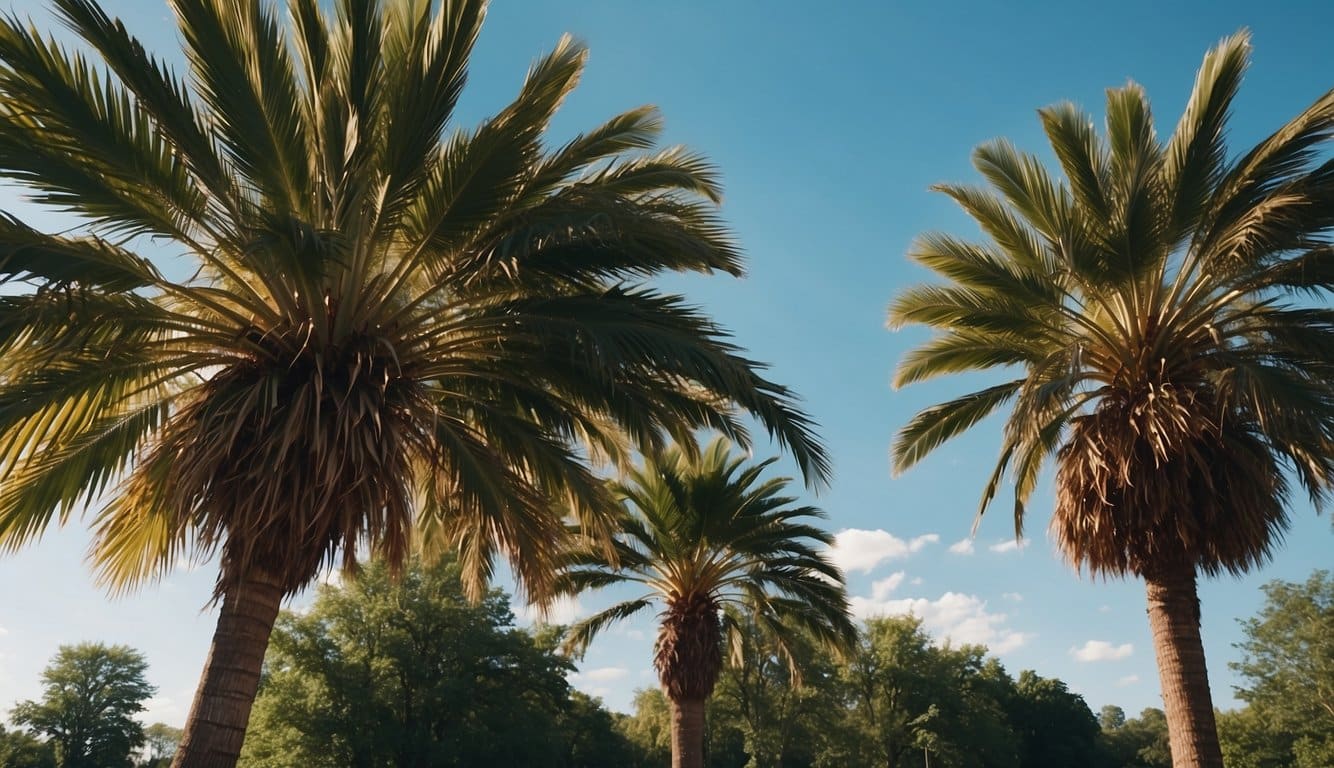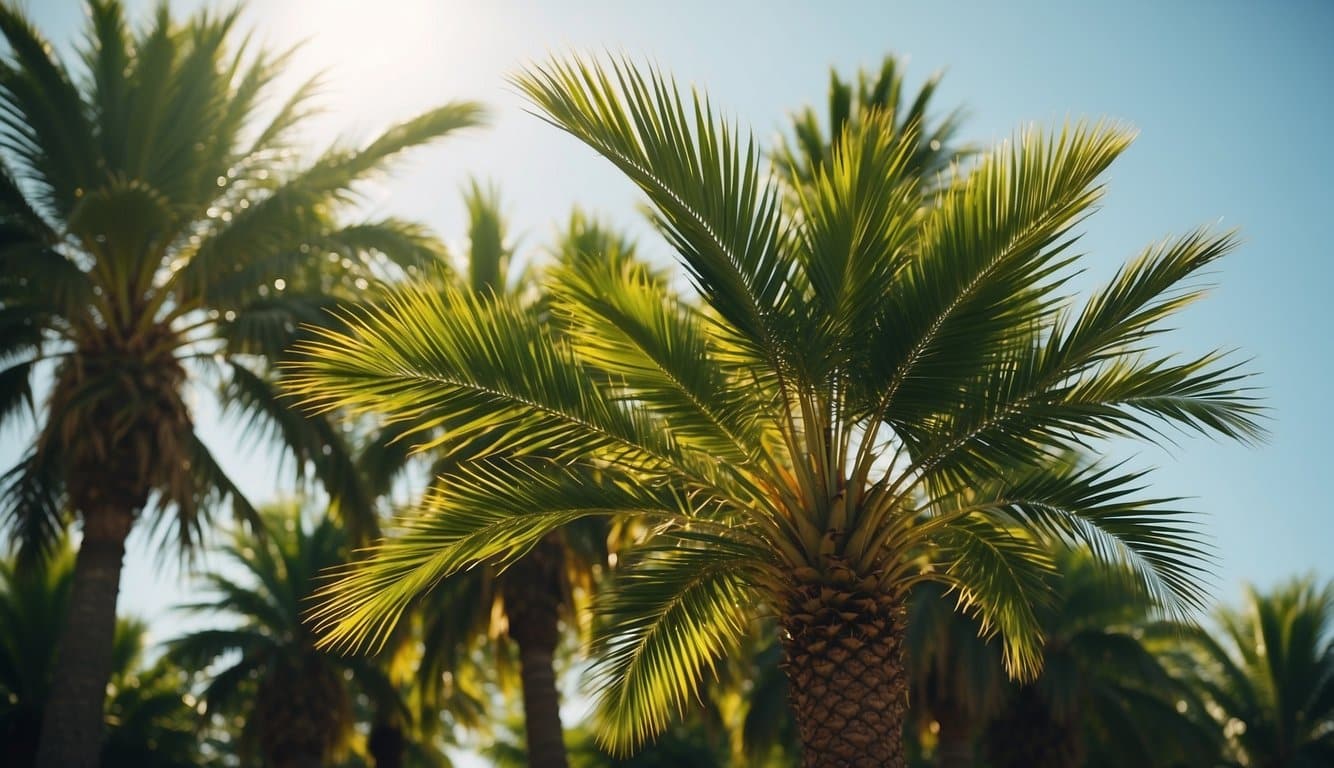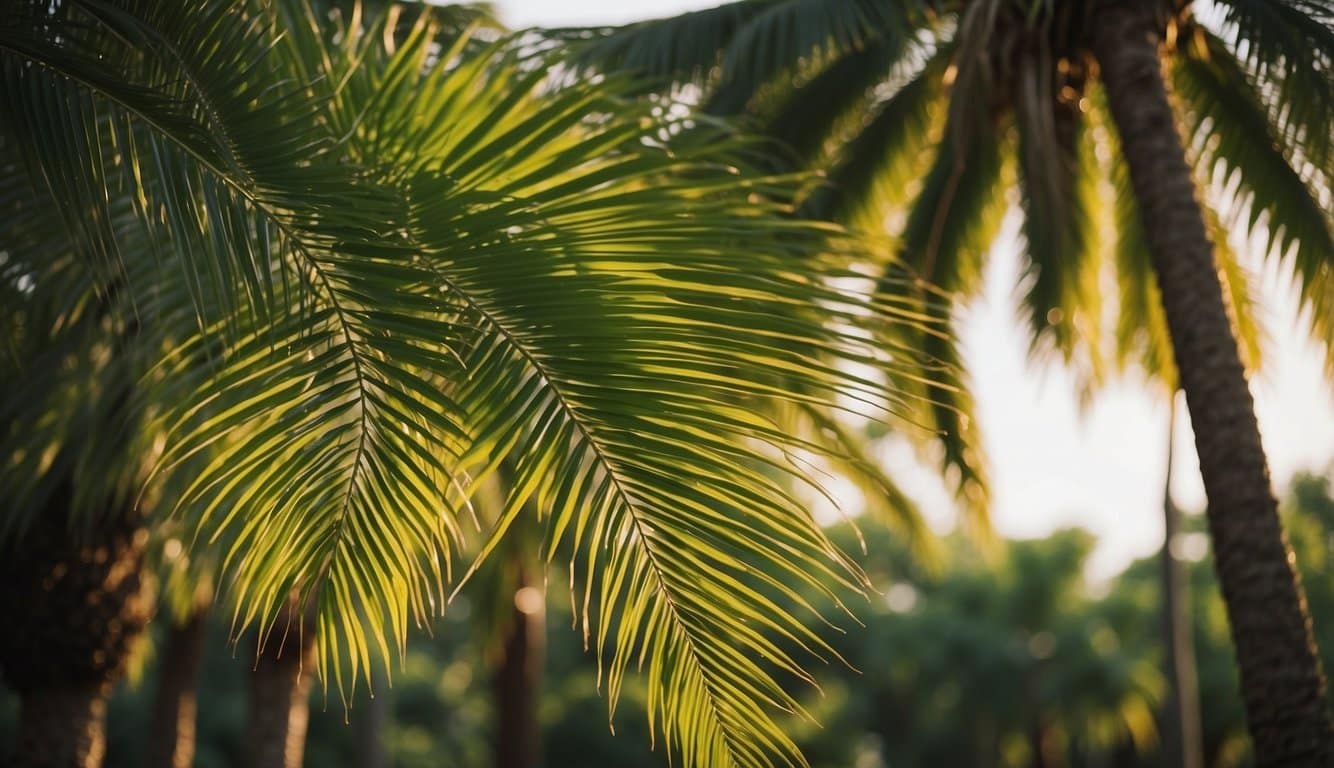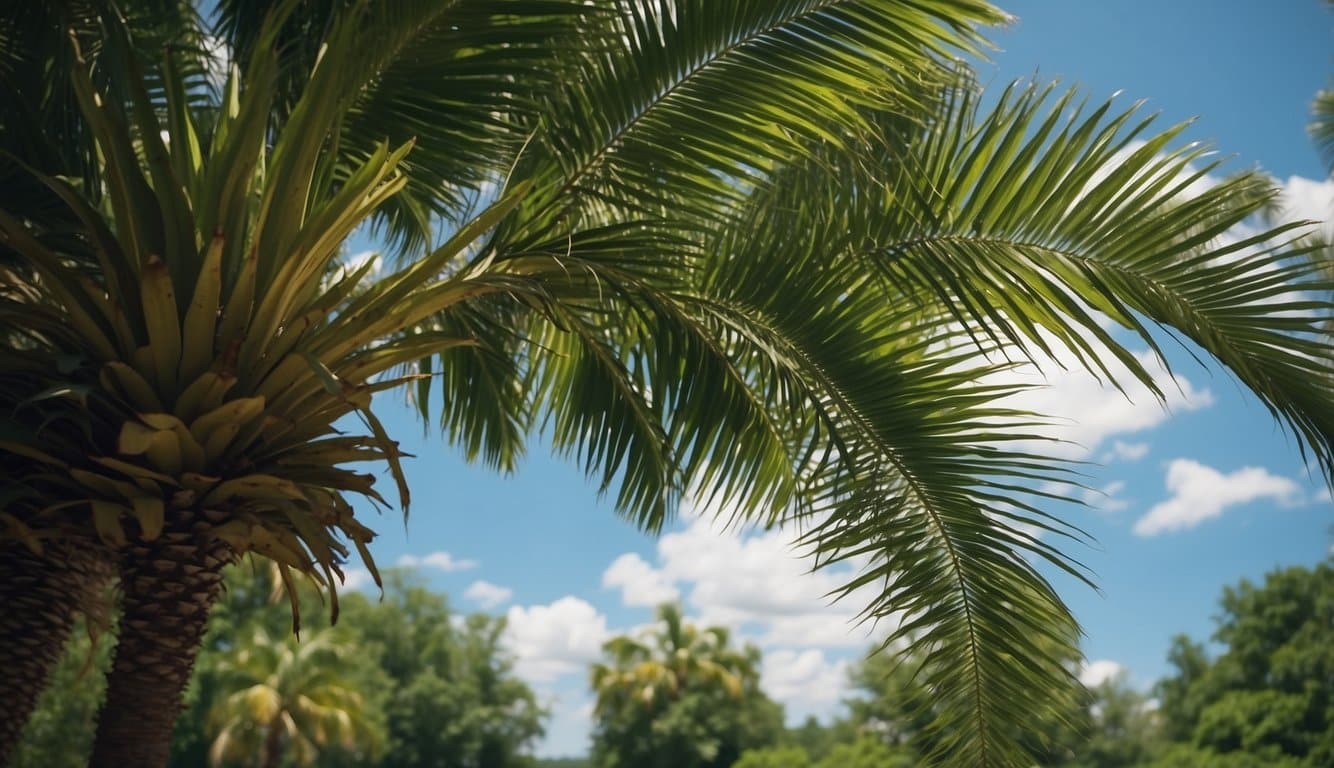While Kentucky may not be the first place that comes to mind when one thinks of palm trees, certain species have proven to grow in this region with success.
The state’s climate, typically marked by warm, humid summers and cold winters, is accommodating to some cold-hardy palm varieties.
Homeowners in Kentucky interested in adding an exotic touch to their landscaping have options such as the Needle Palm and the Windmill Palm (Trachycarpus fortunei) which can withstand lower temperatures and even thrive in Kentucky’s USDA hardiness zones.
The growth of palm trees in Kentucky does, however, require specific considerations in terms of location, soil type and protection during the coldest months.
For successful cultivation, strategies such as site selection with plenty of sun exposure, adequate soil drainage, and insulation during winter freezes are crucial.
Enthusiasts should also be ready to engage in more attentive care and maintenance relative to the palms found in more traditional tropical or subtropical locations.
Key Takeaways
- Certain cold-hardy palms can grow in Kentucky’s climate.
- Successful growth requires careful selection of species and cultivation practices.
- Palm tree enthusiasts must provide attentive maintenance, especially in winter.
Botanical Suitability
Assessing the growth potential of palm trees in Kentucky involves understanding the climate and soil requirements of these tropical species within a temperate region.
Climate Compatibility
Kentucky’s climate is classified as humid subtropical under Köppen climate classification, with hot summers and moderately cold winters.
Palm trees that may grow in Kentucky must be able to endure cooler temperatures and occasional freezes.
According to the USDA Plant Hardiness Zone Map, Kentucky ranges from Zone 5b to Zone 7a, indicating minimum winter temperatures between -15 to 0 degrees Fahrenheit.
Species such as the Needle Palm (Rhapidophyllum hystrix) and the Windmill Palm (Trachycarpus fortunei) are noted for their cold hardiness and can be suitable for Kentucky’s climate, particularly in southern areas.
For successful cultivation, these palms require strategic placement such as southern or southeastern exposures to maximize warmth and light during the winter months.
Soil Types and Requirements
The soil in Kentucky varies significantly across the state, however, it predominantly consists of alkaline-based clay soils.
- Optimal Soil Conditions for Palm Trees:
- Well-draining: To prevent root rot, essential for palms.
- Slightly Acidic to Neutral pH: Generally preferable for most palm species.
Given that native Kentucky soils may not meet these conditions, modifications can be essential for growing palm trees.
Gardeners should consider amending the soil with sand or organic matter to improve drainage and adjust the pH to suit the specific needs of the palm species being planted.
Regular soil testing can guide fertilization and amending practices to maintain appropriate growing conditions over time.
Growing Palm Trees in Kentucky
Kentucky’s climate presents a unique challenge for palm tree enthusiasts, but with careful selection and site planning, it is possible to cultivate these tropical emblems.
Regional Variations
In Kentucky, the USDA hardiness zones vary from 5b to 7a, which greatly affects the viability of growing palm trees.
The southwestern corner of the state has areas classified in zone 7, where the climate is most suitable for palm trees. They may require protection such as mulching and strategic planting to provide shelter from winter winds.
Best Palm Tree Varieties
When considering palm trees for Kentucky, one should look at more cold-hardy species. Below are two varieties known to be better suited for Kentucky’s climate:
- Dwarf Palmetto Palm (Sabal minor)
- Best in protected areas
- Requires mulching for winter protection
- Windmill Palm (Trachycarpus fortunei)
- Notable for its tolerance to cold
- Ideally planted with some shelter from severe weather
Cultivation Practices
When endeavoring to cultivate palm trees in Kentucky, enthusiasts should focus on appropriate planting techniques and a regimen of maintenance and care to promote tree vitality.
Planting Techniques
For palm trees to stand a chance in Kentucky, planting location is crucial. They require protection from severe winter conditions, which can be accomplished by:
- Selecting microclimates within the garden that offer shelter from harsh winds and excessive cold.
- Planting near structures or other vegetation to create a favorable microclimate.
- Opting for south-facing slopes where they can receive ample winter sun and warmth.
- Mulching heavily to maintain consistent soil temperature and moisture.
Maintenance and Care
Once planted, palm trees in Kentucky need consistent maintenance and care to thrive:
- Watering: Regular, deep watering that encourages deep root growth while allowing the soil to dry between sessions.
- Fertilizing: Using a palm-specific fertilizer to provide the necessary nutrients typically lacking in Kentucky soils.
| Season | Care Tips |
|---|---|
| Spring | Begin routine fertilization and increase watering as temperatures rise. |
| Summer | Monitor for pests and diseases, ensure continued watering and nutrient provision. |
| Fall | Prepare palms for winter with additional mulch and reduced watering to harden them off. |
| Winter | Provide protective coverings if extreme cold threatens, potentially with heat sources if needed. |
- Pruning: Remove dead or dying fronds only, as over-pruning can be detrimental to palm health.
Frequently Asked Questions
In exploring the prospects of growing palm trees in Kentucky, enthusiasts frequently inquire about species that can endure cooler climates, winter survivability, and specific care needs. This section addresses the most common questions with precise information based on horticultural knowledge.
What species of palm trees are able to survive in colder climates like Kentucky?
The Needle Palm (Rhapidophyllum hystrix) and Windmill Palm (Trachycarpus fortunei) are notable species known for their resilience in cooler climates and are potential candidates for cultivation in Kentucky’s environment.
Is it possible for Palm trees to sustain through Kentucky winters?
While challenging, certain palm tree species like the Windmill Palm can sustain through Kentucky winters if they receive adequate protection from extreme cold, like mulching the root zone and wrapping their trunks.
What are the ideal conditions for growing Palmetto palm trees?
Palmetto palm trees (Sabal spp.) require well-drained soil, full to partial sunlight, and a warm, humid environment, which may necessitate added protection or greenhouse cultivation in Kentucky’s variable climate.
How does the fruit of a Pindo palm tree differ from typical palm tree fruits?
The Pindo palm tree (Butia capitata) produces edible fruits that are sweet and jelly-like, contrasting with the more common coconuts or dates found on tropical palm species, which are not typically grown in cooler regions like Kentucky.
Within the United States, particularly how far north have palm trees been successfully cultivated?
Palm trees have been successfully cultivated as far north as the Carolinas in the US. With appropriate care, certain palm species can thrive in these unexpected climates.
What specific care do palm trees require to thrive in non-tropical states?
Palm trees in non-tropical states such as Kentucky require specific care.
This includes winter protection, appropriate watering schedules to prevent root rot, and potentially a windbreak to shield from cold northern winds.
